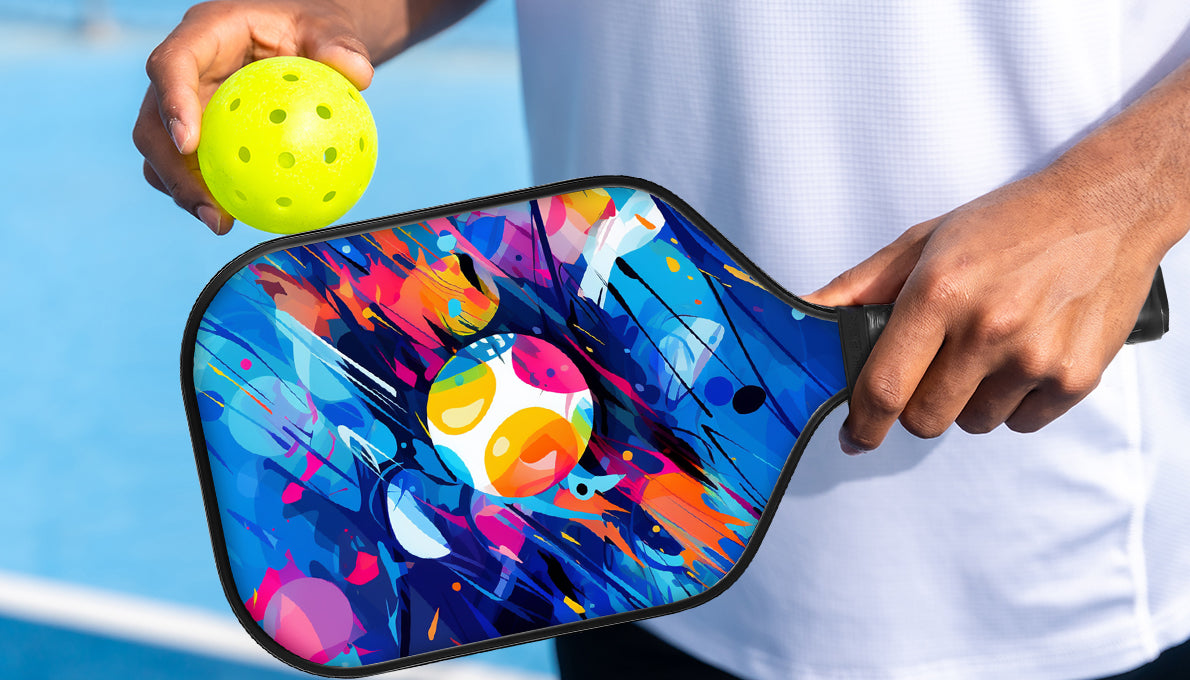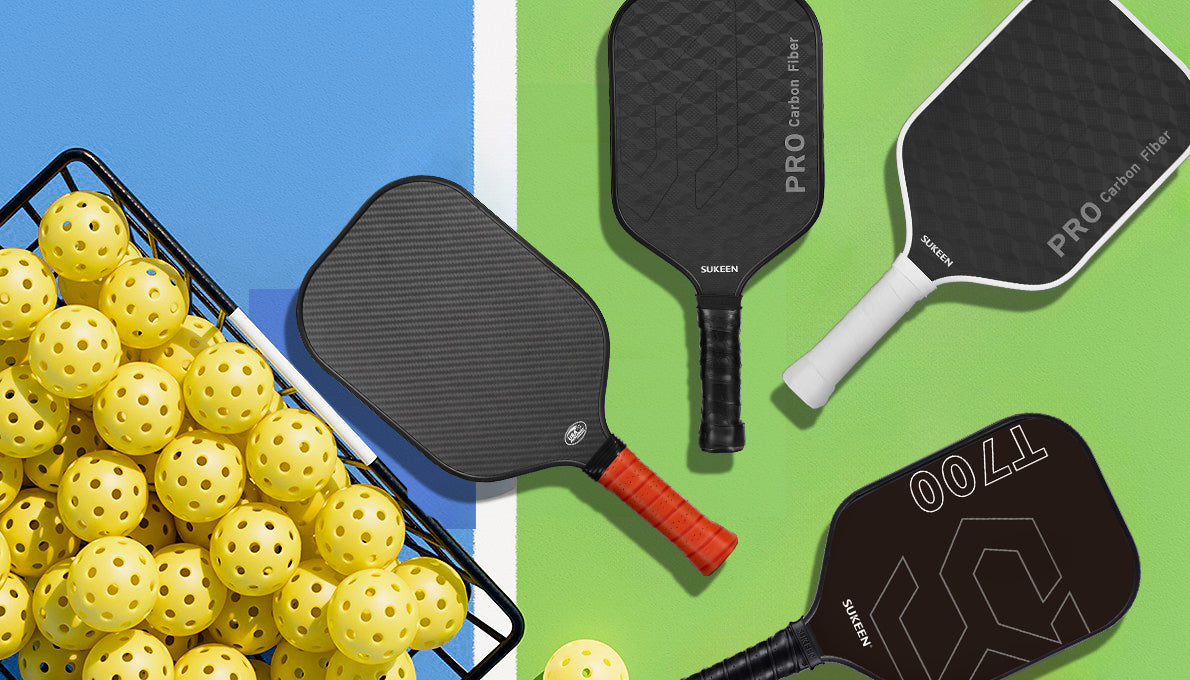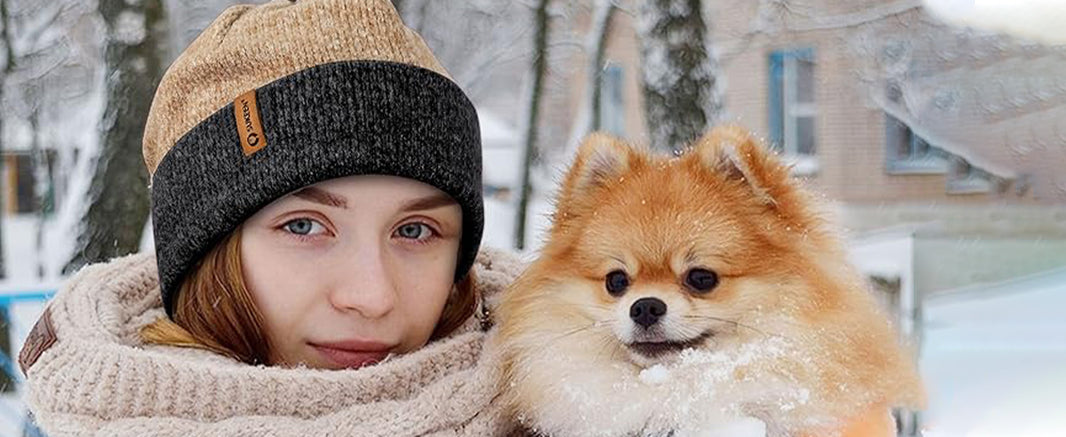How to Add Texture to the Pickleball Paddle?
Ⅰ. Definition and Classification of Texture ThemesⅡ. The Impact of Texture on Paddle PerformanceⅢ. Expert Opinion and Manufacturer’s AdviceⅣ. FAQ
In the world of pickleball, the texture of a paddle not only affects the appearance, but also has a direct relationship to the performance of the paddle. For intermediate and advanced players, choosing the right texture theme can significantly improve the control, spin effect and grip of the paddle. This article will explore in detail how to add texture themes to a pickleball paddle, helping you choose the most suitable design based on your personal needs while following the standards of the USAPA.
Ⅰ. Definition and Classification of Texture Themes
1. Basic concepts
The texture theme pertains to the design and structure of the paddle's surface, which is crucial for enhancing its performance during ball strikes. Variations in texture can influence the paddle's grip, spin generation, and overall control, thereby refining the playing experience. As technology advances, contemporary paddles increasingly focus on detailed texture designs to cater to diverse player preferences.
2. Texture types
a). Concave and convex texture
Concave and convex texture definition and function Concave and convex texture enhances grip by changing the undulations on the surface of the paddle. The grooves and protrusions on the surface of the paddle increase the contact area between the paddle and the ball, thereby providing stronger friction and better control. Concave and convex textures can significantly improve stability and precision when hitting the ball.
Adding method Processing
Manufacturers use special mold pressing or laser engraving technology to form concave and convex textures on the surface of the racket during the production process.
Post-processing
Some rackets can add concave and convex designs through post-texturization, such as using texture stickers or coatings.
Use scenario Concave and convex textures are particularly suitable for players who need precise control, such as providing better rebound control and hitting feel when serving and receiving.
b). Mesh texture
The mesh texture features a consistent pattern of holes across the paddle’s surface. This arrangement efficiently disperses the ball's impact, enhancing both control and stability. By minimizing vibration upon contact, the design helps the paddle maintain its stability during high-speed shots, which is essential for player control and comfort.
Adding method Mold design
During the racket manufacturing process, the mesh texture is created through a special mold. This method can ensure the uniformity and consistency of the mesh design.
Surface treatment
Adding a mesh texture sticker or coating to the surface of an existing racket can also achieve a similar effect.Use scenario The mesh texture is suitable for players who like to play controlled balls and need stability support. This texture can help reduce the vibration of the racket during the shot, thereby improving the accuracy of the shot.
c). Grain Texture
Granular texture enhances the spin of the ball by creating a detailed grain pattern on the paddle’s surface. This design increases friction between the paddle and the ball, which amplifies the ball’s spin upon contact, thereby altering its trajectory and bounce.
Coating Technology
Apply a specialized grain coating to the paddle's surface to create a fine granular texture that boosts friction. The coating may consist of various materials, such as sand or silicone, with particle size and distribution influencing the texture’s effectiveness.
Laser Engraving
Utilize laser engraving technology to precisely etch a granular pattern onto the paddle. This method ensures accurate particle distribution, enhancing the paddle’s spin capabilities.
Use Scenarios Grain texture is particularly suitable for players who like to play spin. Grain texture can significantly increase the spin effect of the ball, allowing players to better control the direction and speed of the ball.
3. USAPA Standards
All racket texture designs must comply with USAPA regulations to ensure fair competition. USAPA has specific restrictions and requirements on the depth, shape and distribution of the texture. According to USAPA regulations, the texture on the surface of the racket should not be too deep or too complex to avoid excessive impact on the performance of the ball. For more details, please refer to USAPA official document.If you have no idea about the choice of racket, you can refer to "What to Look for in a Pickleball Paddle?"
Ⅱ. The Impact of Texture on Paddle Performance
1. Improvement of grip
Grip refers to the frictional interaction between the paddle’s surface and the ball. A higher grip level provides enhanced control, enabling players to more precisely direct the ball's trajectory, speed, and spin during play. Enhanced grip is crucial for achieving accurate shots, particularly in scenarios requiring precise control, such as serving and returning.
Concave-Convex Texture
This texture design creates various grooves and raised areas on the paddle's surface, increasing the contact area between the paddle and the ball. By enhancing the grip, this texture improves shot control and stability.
Mesh Texture
Mesh texture offers a consistent distribution of friction across the paddle’s surface. This even friction ensures a stable grip on the ball, minimizing control errors that can arise from uneven surface contact.
Grain Texture
Adding fine particles to the paddle's surface, grain texture enhances friction between the paddle and the ball. Although primarily used to boost the ball’s spin, it also significantly improves grip, contributing to better overall control.
2. Control and precision
The mesh texture forms a uniform grid of holes on the surface of the racket. This layout ensures that the racket provides a consistent contact surface with every shot. The uniform hole layout effectively disperses the impact of the ball and reduces vibration when hitting the ball. By reducing vibration, the mesh texture allows the racket to maintain greater stability when hitting the ball. This stability helps players more accurately control the direction and power of the ball when hitting fast shots and changing shots. When serving, the mesh texture provides a consistent hitting feel, allowing players to better control the direction and power of the serve. In the case of rapid ball changes, the mesh texture helps players maintain the stability of the racket and provide better control and precision.The choice of racket grip will also affect the control. Choose the right grip size to experience the ultimate control. Read "What is the Grip Size for a Pickleball Paddle?"
3. Spin effect
Grain Texture creates a fine grain pattern on the paddle’s surface. These particles are uniformly distributed, enhancing both the contact area and friction between the paddle and the ball. This texture facilitates greater ball spin and improves the control over the ball’s direction and speed. During a spin shot, the granular surface helps players manage the ball's rotation more precisely, increasing the shot's variability and impact.As a paddle manufacturer, incorporating granular textures involves using different types of particles, each offering unique effects and performance characteristics.
a). Gravel Particle Texture
Gravel particles provide high roughness, resulting in substantial friction. This enhances the ball's spinning capability significantly. Gravel is durable and maintains the paddle's surface texture over time, ensuring long-lasting performance.
b). Silicone Particle Texture
Silicone particles offer excellent elasticity and flexibility, contributing to a softer touch upon impact. Their moderate friction level enhances the spin effect while preserving the paddle’s control, making them ideal for balanced performance.
c). Metal Particle Texture
Metal particles have high hardness and high strength, which can significantly increase the hardness and durability of the racket. Metal particles have extremely high friction and can produce a very strong spin effect when hitting the ball.
Metal particle textures can produce a very strong spin effect when hitting the ball, making the ball's flight trajectory more unpredictable. The high hardness and high strength of metal particles make the racket more stable when hitting the ball and reduce vibration.How to judge the quality of a racket is something every player must know. Read "How to Judge Whether a Pickleball Paddle is Good or Bad?"
4. Durability
Different texture designs also affect the durability of the racket. Generally speaking, rougher textures may cause accelerated wear on the racket surface, but the performance improvement they provide in the short term is often worth it. Therefore, choosing a high-quality racket texture can help extend its life. SUKEEN's carbon fiber series rackets are known for their light weight and high strength. The texture design of these rackets usually includes high-tech concave and convex textures, precise mesh textures, and particle textures, which are suitable for intermediate and advanced players who need high-intensity hitting and precise control.To learn more about rackets that produce spin, read "Master the Secret of Spin Ball"

Ⅲ. Expert Opinion and Manufacturer’s Advice
1. Ben Johns
The texture on a pickleball paddle can make a huge difference in how much spin you can generate. A paddle with a pronounced texture allows for better grip on the ball, which is crucial for creating spin on serves and shots. For players looking to add more spin to their game, a paddle with a textured surface is a great choice.
2. Simone Jardim
The texture of a paddle's surface plays a significant role in the accuracy and consistency of your shots. A well-designed texture can help maintain precision and stability, especially during fast-paced rallies and when adjusting angles. I always recommend choosing a paddle with the right texture based on your playing style to enhance your overall performance.
3. Kyle Yates
The texture on the paddle surface affects the speed and power of your shots. A textured paddle increases friction, which can help in generating more power and speed. It’s important for players to select a texture that aligns with their playing style and strategies to maximize their paddle’s potential.
4. Manufacturer’s Advice
I recommend players to choose a texture based on the following points.
a). Personal Playing Style
Aggressive Play
Players who like to play aggressively can choose SUKEEN’s Grain Texture rackets. Grain texture increases the spin effect of the ball by forming a fine particle structure on the surface of the racket, which makes the ball produce more spin when hitting the ball, changing the flight trajectory and rebound effect of the ball. For example, SUKEEN’s Carbon Fiber Series rackets use a high-tech grain texture design, which is very suitable for players who play offensively.
Controlled Play
Players who focus on control can choose SUKEEN’s Mesh Texture rackets. The mesh texture forms a uniform hole layout on the surface of the racket, which can effectively disperse the impact of the ball and improve control and stability. SUKEEN’s Glass Fiber Series rackets use a sophisticated mesh texture design, which is very suitable for players who need high-precision control.For more personal play, read "Pickleball Paddle Single Player Game Tips".
b). Frequency of racket use
High frequency use
For rackets that are used frequently, it is important to choose a texture design with stronger durability. SUKEEN's rackets are made of high-strength materials and advanced processing to ensure that the rackets maintain their excellent performance after long-term use. For example, SUKEEN's carbon fiber series rackets not only have excellent performance, but also have extremely high durability and are suitable for high-frequency use.
Low-frequency use
For rackets that are used less frequently, you can choose a texture design with superior performance but relatively low durability. SUKEEN's fiberglass series rackets provide excellent performance and control, which is perfect for players who play occasionally but seek high performance.
Ⅳ. FAQ
1. How to maintain the texture of the paddle?
a). Clean regularly
Soft Cloth or Sponge
Regularly wipe the paddle's surface using a clean, gentle cloth or sponge. Refrain from using rough materials that could damage the texture.
Warm Water and Mild Soap
Clean the paddle with warm water and a small amount of gentle soap (such as dishwashing liquid). Carefully cleanse the textured areas to eliminate dirt and dust. Thoroughly rinse with a damp cloth and then dry with a clean, dry towel.
Soft Brush Cleaning
Use a small, gentle brush or a specialized cleaning tool to delicately clean the textured sections. Ensure the brush is soft to prevent any harm to the texture while effectively removing built-up dirt.
Use a special cleaner
If there is stubborn dirt on the grain texture, you can use a cleaner designed for rackets. Follow the product instructions to ensure thorough cleaning without damaging the surface of the racket.
b). Prevent texture damage and proper storage protection
When storing or using the racket, it is recommended to put the racket in a protective cover to avoid direct contact between the texture of the racket and hard objects to prevent scratches or damage to the texture. Do not expose the racket to extreme heat or humidity. These conditions may cause the grain texture to age and fall off.
For specific maintenance and cleaning methods for rackets, please read "How to clean and maintain pickleball paddle?" for details.
2. The impact of texture wear
a). Reduced spin effect
Reduced friction
The grain texture on the surface of the racket is the key to generating spin. When the texture is worn, the friction of the racket will decrease, which will directly affect the spin effect of the ball. Players may not be able to generate the desired spin when hitting the ball, which affects the overall performance.
Reduced shot control
The wear of the grain texture will also affect the racket's shot control. The worn texture cannot provide enough grip, making it difficult for players to accurately control the flight trajectory of the ball when changing balls quickly.
b). Changes in hitting comfort
Vibration Transmission
When the racket’s texture wears down, it may lead to increased vibration upon impact with the ball. The diminished texture is less effective at absorbing impact, resulting in vibrations being transferred to the player's hand, which can reduce the comfort of each hit.Shock absorption can be achieved by choosing high-quality racket materials, "What is the best material for a pickleball paddle?"
Surface Irregularities
Over time, wear and tear on the texture can cause the racket’s surface to become uneven. This uneven surface can compromise the racket's overall performance and lead to an inconsistent hitting experience.The manufacturing process of the racket also affects whether the racket has consistency. You can read more about it in "The Secret of the Thermoformed Pickleball Paddle"
c). Impact on the durability of the racket
Material loss Continuous wear of the texture may cause gradual loss of racket materials. Especially on rackets with deep grain textures, wear may cause the surface material to fall off, affecting the overall structure and durability of the racket.
d). Repair and replacement recommendations
Inspection Frequency
Regularly examine the grain texture of your racket for signs of significant wear. If you notice substantial deterioration, it is advisable to address the issue promptly by either repairing or replacing the racket to maintain its peak performance.
Professional Repair
For high-end or professional-grade rackets, it is best to seek assistance from the manufacturer or a specialized repair service. Experts can provide the most effective repair solutions and ensure that the racket’s performance remains uncompromised.
Regarding racket replacement "How to Replace the Replacement Grip?
" clearly introduces the necessity and timing of racket replacement.
VI. Conclusion
Maintaining and caring for the racket's texture is crucial for preserving its peak performance. Regular cleaning, preventing damage to the texture, and ensuring proper storage and protection can significantly prolong the racket's lifespan and ensure it performs optimally during play. By understanding how texture wear affects performance and implementing suitable maintenance practices, players can enjoy consistent and comfortable performance with every shot.
Related Articles
What to Look for in a Pickleball Paddle?What Pickleball Paddle Weight is Right for Me?How to Play Pickleball?Mastering Pickleball with Lead TapeMaster the Secret of Spin Ball







